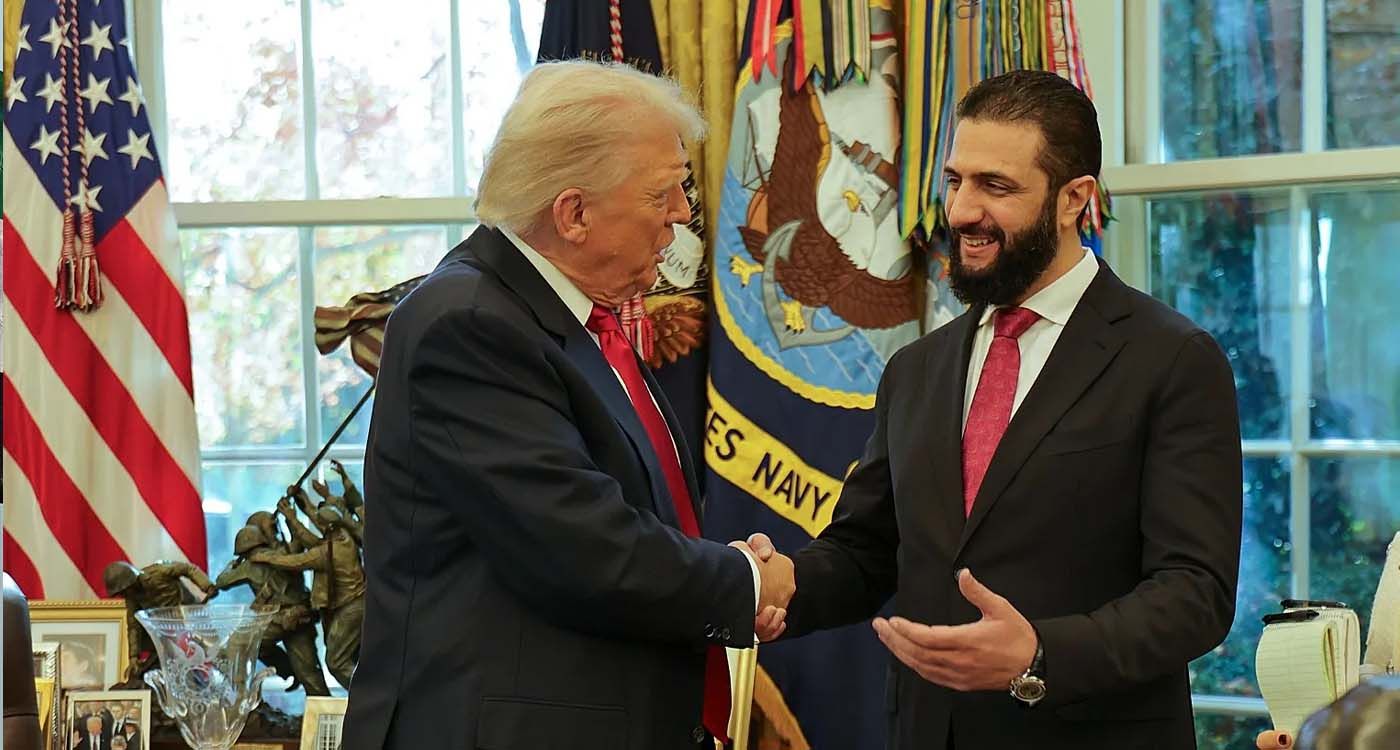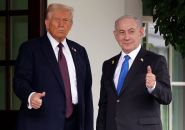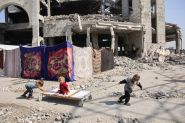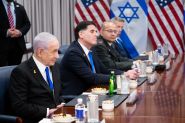- Home
- Middle East
- Sharaa in Washington: A Turning Point for Syria

©HANDOUT / SANA / AFP
The question for Damascus is what comes next, with Sharaa showing that he is ready for the global prime time.
Syrian President Ahmad al-Sharaa visited the White House on Monday for a historic meeting with U.S. President Donald Trump that capped a year in which Damascus has rapidly come in from the cold and reintegrated into the international community. Sharaa has helped steer Syria through this complex path, beginning with pushing the Assad regime out of power in December 2024.
The Trump administration has been key to Syria’s ability to chart a new, pro-Western foreign policy. Syria understands this. Syrian state media SANA called the visit historic and noted that “this marks the first visit of a Syrian president to Washington since the country’s independence in 1946, a scene imbued with deep political symbolism and reflecting the culmination of a new phase confirming Syria’s return as an active player on the international stage.”
Sharaa has been able to embrace his new global stature. Upon taking power, he quickly moved to hold high-level meetings with Saudi Arabia and Turkey, balancing Syria’s place in the Middle East. Although tensions between Riyadh and Turkey are much reduced from the era when Riyadh led countries to sever relations with Qatar in 2017, the two do not always see eye-to-eye. Sharaa has connections to both countries. He was born in Riyadh, and when he led Hayat Tahrir al-Sham in Idlib, his group had amicable relations with Turkey. For instance, several figures within the new government of Syria lived in Turkey. Ankara, for its part, has sought to provide support for the Syrian security forces as the country tries to rebuild itself as a state.
Another important move by the Syrian leader was ensuring that Damascus moved quickly to work with Western countries and secure sanctions relief. The Assad regime had been under numerous layers of sanctions, and the international community normally moves slowly when it comes to things like removing sanctions or delisting terrorists. Sharaa had been designated as a terrorist by the U.S. and UN, for instance. Without sanctions relief, then Syria could sink back into division and chaos. The country continues to be divided, with the U.S.-backed Syrian Democratic Forces controlling eastern Syria. Turkish forces are still present in northern Syria, and the Druze minority in Suwayda has demanded autonomy with Israeli support.
Sharaa has sought to navigate this complex environment. In March, he met with Mazloum Abdi, the head of the SDF, and agreed on a roadmap to integrate it into the new Syrian security forces. In October, after a trip to New York for the UN General Assembly, Sharaa went to Moscow. Russia, which had been a key ally of the Assad regime, still maintains a military base in Latakia and a naval base in Tartus. Syria’s new president understands that it is better to have amicable ties with Moscow than to create a crisis.
U.S. President Donald Trump has been a major supporter of the new Syria. In May, Trump met with Sharaa in Saudi Arabia. This meeting was arranged by the Saudis and reflects how Riyadh was using its warm ties with Washington to get an unprecedented meeting to happen. Turkey, which also has close ties to the Trump administration, has supported American engagement with Damascus. Turkey’s Foreign Minister Hakan Fidan flew to Washington to meet with Sharaa as the Syrian president visited the White House. This was clearly coordinated to show that all these ships are sailing in the same direction.
The meetings in Washington appear to have been a success. Trump has vowed to support Syria, and Damascus is reportedly joining the U.S.-led coalition against ISIS. Sharaa has shown that he wants to work with the U.S. Central Command (CENTCOM). In fact, just prior to the White House meetings, Syria’s foreign minister posted a video of Sharaa playing basketball with CENTCOM head Admiral Brad Cooper and Kevin Lambert, the head of the anti-ISIS mission. The message is that Syria’s president is a young, modern man who can get on a court with America’s top generals.
The question for Damascus is what comes next. Sharaa has shown that he is ready for the global prime time, sitting for interviews with top media and handling himself well. Many countries are eager to embrace the new government in Damascus because they see it as a potential success story. Unlike some other countries in the region, Syria appears to have a positive path forward. For instance, no policymakers would likely see Yemen as having any path forward so long as the Houthis control part of the country. There is little optimism regarding Libya or Sudan either. Lebanon, for its part, is seen as continuing to have a major challenge in disarming Hezbollah. Toward that end, U.S. Senior Director for Counterterrorism Sebastian Gorka and Undersecretary of the Treasury for Terrorism and Financial Intelligence John Hurley both visited Beirut this past week. Iraq, a key neighbor of Syria, is holding elections and U.S. officials recently visited Baghdad to discuss terrorist threats. If Iraq can be stabilized, it is possible this will also help Syria.
Syria will need to tackle several important issues in the coming months. First is the need to find a path to integrate the SDF, which has up to 100,000 trained fighters, many of whom were trained and equipped with U.S. support. This is a more cohesive force than the current Damascus-backed security forces. Even though the new Syrian security forces are growing by the day, they have a long way to go to secure the entire country. With U.S. support and CENTCOM advice, it is possible that the hurdles involved in integrating the SDF can be overcome. Syria joining the fight against ISIS could be a game-changer by enabling resources from Operation Inherent Resolve, the anti-ISIS mission, to support Damascus. For instance, the U.S. has a garrison at Tanf in southern Syria. These forces have worked with Arab units that have joined Division 70 of the new Syrian army and also the new Syrian Interior Ministry units.
A second challenge for Damascus will be finding an accommodation with Suwayda. The meeting with the White House could also help smooth over ties with Israel. Although Syria is unlikely to join the Abraham Accords yet, it could still work with the U.S. on some kind of initial deal with Israel. This would help stabilize southern Syria, particularly Daraa province near the Golan Heights and Jordan. This area has been exploited by pro-Iranian groups in the past, such as Hezbollah and drug smugglers. If stabilized, this could help Syria move towards a secure future. The White House will need to remain engaged with Syria on issues relating to both the SDF and Israel. Due to Trump’s warm ties with Israel, Turkey, and Saudi Arabia, there are many opportunities for the future for Syria.
Read more




Comments